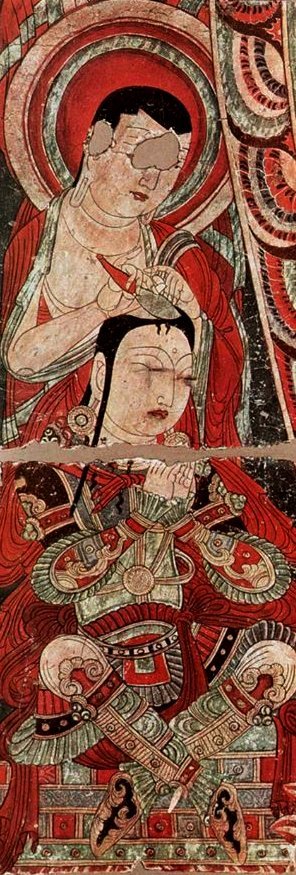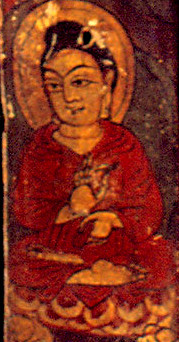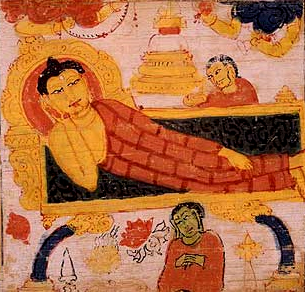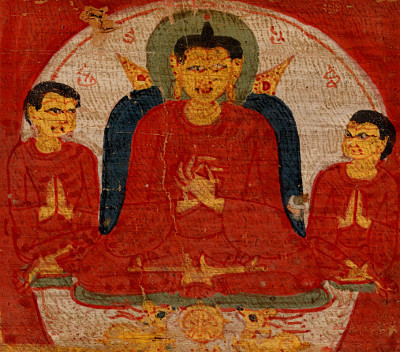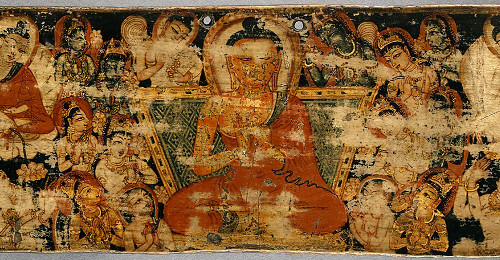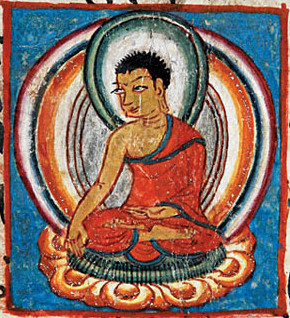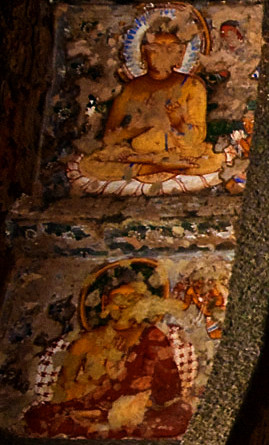Because we were talking a bit about the colors of the robes of Buddhist monks…
Here are a few details mostly from murals at Bezeklik Thousand Buddha Caves (around 1000 years old). They depict various monks and laypeople along the Silk Road in religious scenes. The pictures here mostly come from scans of a book published in German. I have adjusted the black and white levels so the originally faded colors became richer and more vivid again.
The Central Asian monks would have probably not followed the Dharmaguptaka Vinaya, or otherwise followed Chinese tradition. Note the different colored robes, different ways of wearing robes, the slightly different hairstyles, the facial hair… the fact that all the figures have eyebrows… The impression is quite different than from seeing modern monks in Thailand, for example.
There are a few ethnic Chinese to be found in here, such as the figures on the left in the first picture, but most of the figures are Tocharian (Caucasoid type people who were the majority of old inhabitants), and the original Uyghurs (Mongoloid type invaders who established their own dynasty).
The Tocharians are the ones with prominent noses, while the Uyghurs tend to have light skin, dark hair, and sometimes small mustaches. The artists paid attention to detail in the clothing and styles of the donors and laypeople, so their depiction of the monks is probably fairly accurate as well.
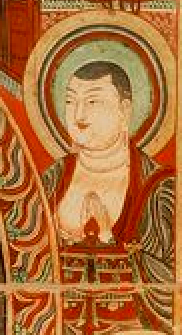


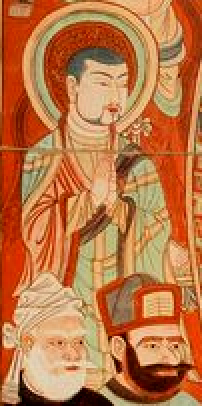


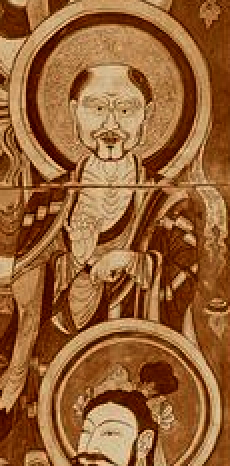
This one is apparently 3rd-4th century and has Hellenistic influences.
This last one is sort of generic and iconographic, but the others seem to be depicting real individuals, almost like taking a time machine back. 



